
Interviews with People Inspired by Oz
Hosted by The Daily Ozmapolitan

70 Years of Oz Movie Magic
A Conversation with John Fricke & Jonathan Shirshekan
This Autumn welcomes two new MGM Wizard of Oz items. The newly remastered digital edition of the movie and a companion coffeetable book. I took some time with the authors to discuss their work on both of these projects, and get their thoughts on how the movie has become one of the best loved films in history.
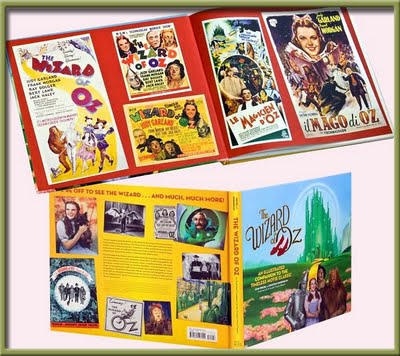 WW: John,
for this
book you worked with a new co-author, Jonathan Shirshekan. How
did you two meet?
WW: John,
for this
book you worked with a new co-author, Jonathan Shirshekan. How
did you two meet?
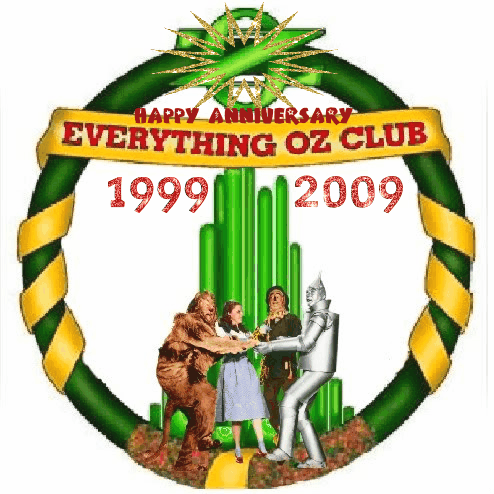 JS: John
and I met
through an internet chat group, Everything Oz. I came
to him when I acquired a
scrapbook that belonged to Judy Garland. The scrapbook, WHICH
I acquired from a gentleman who purchased it from her estate
in 1978,
was compiled and gifted to her by Oscar Doob -- or, at least, by his
offices. Doob was the head of East Coast "exploitation" for
Loews, Inc
which owned M-G-M, and he was very thorough
in chronicling Judy and
Mickey's August 1939 tour to promote the film -- especially their two
weeks-plus in New York City. There is a great deal of
photography,
clippings, and the like in the book that allowed John and me to
illustrate and explain a lesser seen aspect of the film.the
scrapbook to discuss exactly what it was I
had and how to best preserve the material it contained. After a
few
years of occasional correspondence, we talked on the phone and
instantly connected.
JS: John
and I met
through an internet chat group, Everything Oz. I came
to him when I acquired a
scrapbook that belonged to Judy Garland. The scrapbook, WHICH
I acquired from a gentleman who purchased it from her estate
in 1978,
was compiled and gifted to her by Oscar Doob -- or, at least, by his
offices. Doob was the head of East Coast "exploitation" for
Loews, Inc
which owned M-G-M, and he was very thorough
in chronicling Judy and
Mickey's August 1939 tour to promote the film -- especially their two
weeks-plus in New York City. There is a great deal of
photography,
clippings, and the like in the book that allowed John and me to
illustrate and explain a lesser seen aspect of the film.the
scrapbook to discuss exactly what it was I
had and how to best preserve the material it contained. After a
few
years of occasional correspondence, we talked on the phone and
instantly connected.
WW:
John, after publishing several books on the MGM film
and Judy Garland over the years, how did you manage to find new
materials for this project?
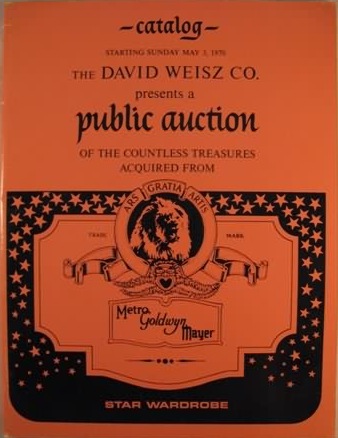
JF: Planning, production, and promotion of Oz were done on the grandest possible Hollywood scale from January 1938 and well into 1940. As a result, there are countless research possibilities, archival investigations, and collections to search. Because M-G-M more-or-less junked its own history circa 1970 (by dumping production files, orchestrations, and etc., for all films into a landfill), the hunt has become even more intensified, as there's no central studio source for even the basic information. To some extent, it's like gathering together a million-piece jigsaw puzzle, wherein some pieces no longer exist and the others have been scattered all over the world from a low-flying plane!
WW: Were there any materials you would have liked to include in the book, but either were unable to get permission or discovered after the book went to press?
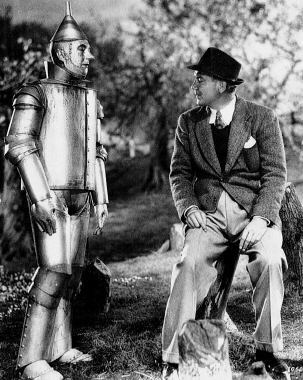
JF: Well, as Jonathan
noted, we put aside some of the rarest stuff, as a
"collector's book" wasn't the desire of those publishing this package.
But, as I said, much of that rare material has already found a
home in
the DVD set book and will appear in the Bugle. One thing
about Jonathan and my book that especially pleases me is
that we've
been able to use a lot of Denslow and Neill artwork throughout. This
shows anyone who reads (or "looks") exactly what movie
audiences of
1939 would have been "expecting" or would have known of Oz at that
time, and it also presents a very clear-cut reminder that Oz didn't
spring from the loins of Louis B. Mayer and M-G-M.
WW: Jonathan, growing up in the age of the internet, how have you managed to collect Oz items at reasonable prices?
JS: It is my experience that the internet has created a duality of sorts in collecting. On one hand, pieces that were considered extremely rare and demanded high prices, such as the 1939 Bissell Carpet Sweeper, have lost their status, as more and more examples have surfaced. Thus, these items, though still incredible, can be obtained at a more reasonable price. On the other hand, the internet, and all the frenzy associated with it, has people scouring their attics and basements. The yield has been incredible, bringing forth one-of-a-kind relics from the film. It is for these collectibles that the highest prices are paid. Along the same lines, sellers also hype, or down right misrepresent, fairly common items as being "rare" or "unique." One of the most startling examples I've encountered was the sale of a reproduction Grauman's Chinese Theatre premiere invitation from the 2005 deluxe DVD set. It was represented as an original and sold for a little over $100. I find that I have to be extremely aware of what I am buying and to budget myself by establishing a high bid beforehand. It is certainly not easy, but I commit myself to a reasonable market price and accept that I may not "win."
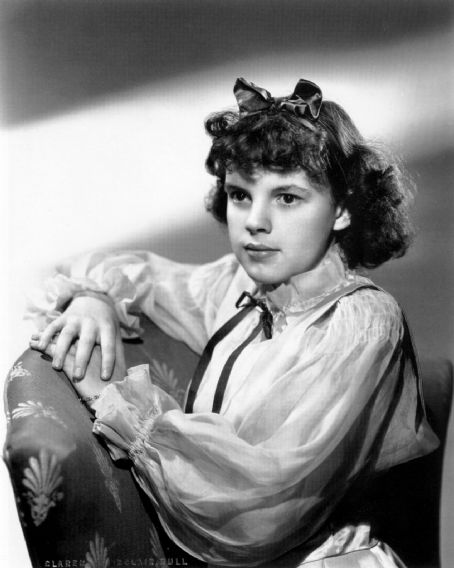 WW: John,
what is the most treasured Oz related item in your personal
collection and why?
WW: John,
what is the most treasured Oz related item in your personal
collection and why?
WW: Jonathan, were you surprised to discover how many Oz pop culture items there are from 1939-1940?
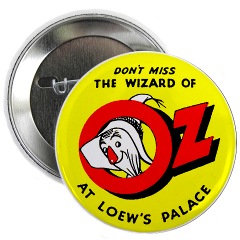
JS: I was never surprised by the number of pieces associated with the 1939-1940 release of the film. I was more surprised by how characteristic the merchandise is of the post-Depression/pre-WWII era. The packaging was nominal (if even existent), and the merchandise itself was more or less practical in nature. Instead of snow globes or pill boxes, as we see now, they made soaps, clothing, carpet sweepers--all goods with a functional role. The items are also much smaller than what is seen today. It's going "green" in a time when the implementation was a necessity.
WW: During your research for this new book, did either of you uncover any previously unknown material?
JF: What seems to turn up now is the second or third generations of families whose ancestors were somehow involved in the film and who kept souvenirs of their work: set reference stills, a random snapshot, production files, script pages -- that sort of thing. And since it's the "how they did it all" aspect of Oz that fascinates me (rather than a compulsion or financial ability to collect, per se), this is the type of material that fascinates me. Such material is used rather sparingly in the book, as the publisher and packager wanted it to be a kind of basic Oz "primer" for those who seek the simple "making of" story...and mostly in photo and artwork, rather than text. But we scattered the rare studio paperwork and photography throughout -- and I was able to use much more of it in the different, 52-page mini-coffee-table book that accompanies the release of the new DVD set. AND even more of it will appear in the Autumn "M-G-M issue" of the Bugle -- and future Bugle issues as part of the continuing "M-G-M Scrapbook" feature (thanks to Scott Cummings and Marcus Mebes).
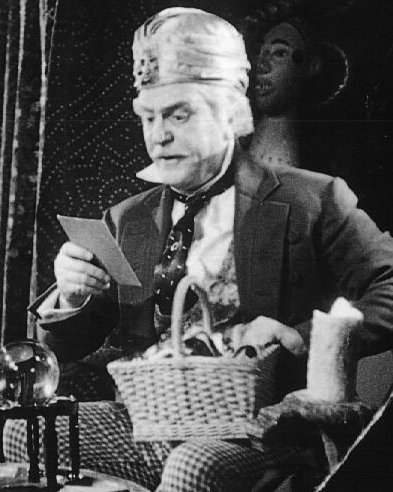
WW: Many people have said that Frank Morgan wore L. Frank Baum's coat when he played the wizard. Any truth to that?
WW: Tell us about the first time you saw the MGM film.
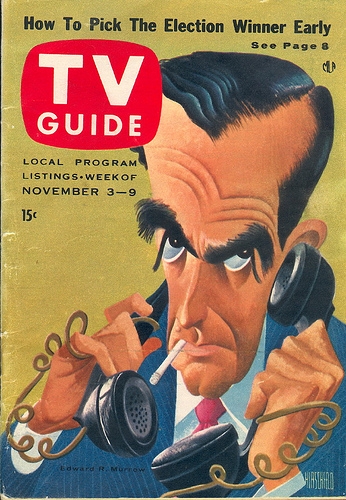 JF: It's
an oft-told tale, I'm afraid, but in brief: I was (as I
always
say) smashed down in front of the TV set by my cousins in Peshtigo,
Wisconsin, on November 3, 1956 -- the night of the first Oz
network
telecast. I already loved (and was encouraged by my parents TO love) music
and musical comedy TV and film and records; Oz
coalesced all of it as nothing before or since, from my very first
viewing. Over the next two years, I discovered the Oz books, Judy
Garland record albums, Garland movies on the early or late show on
television, different ways to research Frank Baum (et al) at the
Milwaukee Public Library...ad infinitum. Then I joined the Oz Club at
age 11 -- and I've been with it )(and AT it!) ever since.
JF: It's
an oft-told tale, I'm afraid, but in brief: I was (as I
always
say) smashed down in front of the TV set by my cousins in Peshtigo,
Wisconsin, on November 3, 1956 -- the night of the first Oz
network
telecast. I already loved (and was encouraged by my parents TO love) music
and musical comedy TV and film and records; Oz
coalesced all of it as nothing before or since, from my very first
viewing. Over the next two years, I discovered the Oz books, Judy
Garland record albums, Garland movies on the early or late show on
television, different ways to research Frank Baum (et al) at the
Milwaukee Public Library...ad infinitum. Then I joined the Oz Club at
age 11 -- and I've been with it )(and AT it!) ever since.
JS: I was a very young child at daycare when I first saw the film. I was never keen on the idea of "going out to play" so keeping me out of trouble (and out of the house) was difficult for my babysitter. The babysitter plopped me in front of the television and placed a VHS tape in the player. Although it had been taped off of the television, and the quality was terribly poor, I still recall being completely captivated. Little did she know that an attempt to keep me occupied would translate into a life-changing experience. But that's when my fascination with Dorothy and her Oz adventures began to take root.
WW: What is your favorite story about the
making of the film? Behind the scenes stuff.
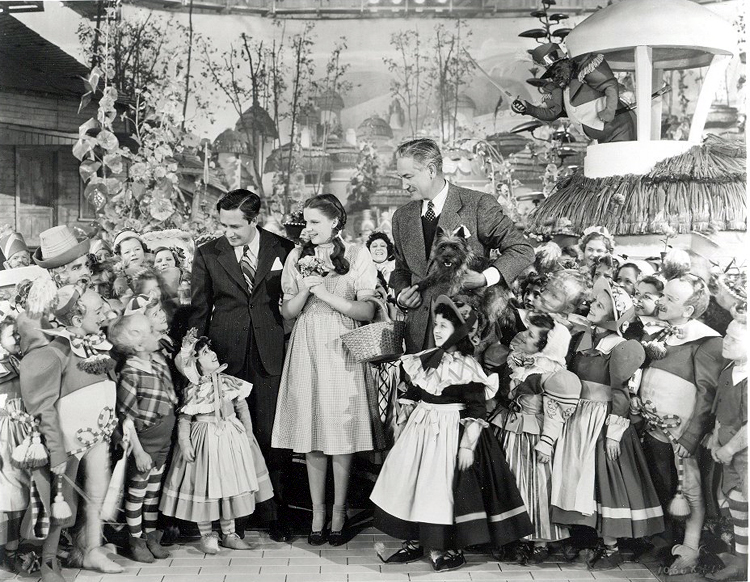 JS:
My favorite story,
though not all that new, is the experience the
"Munchkins" had on the lot during Christmas of 1938. Margaret
Pellegrini, with her zestful storytelling, recalls the incident the
best. She credibly accounts that Judy was given her own "dressing
room
on wheels" that year, signifying her rise as a star. Judy allowed
each
and every Munchkin a tour and, at the end, gifted them with a
personalized signed photograph. Later, she produced a huge
box of
candy which she placed on the Yellow Brick Road in Munchkinland and
enjoyed the treats with her fellow actors. "Sweets for the
sweets,"
she told them. I can only imagine how wonderful an experience
that
must have been.
JS:
My favorite story,
though not all that new, is the experience the
"Munchkins" had on the lot during Christmas of 1938. Margaret
Pellegrini, with her zestful storytelling, recalls the incident the
best. She credibly accounts that Judy was given her own "dressing
room
on wheels" that year, signifying her rise as a star. Judy allowed
each
and every Munchkin a tour and, at the end, gifted them with a
personalized signed photograph. Later, she produced a huge
box of
candy which she placed on the Yellow Brick Road in Munchkinland and
enjoyed the treats with her fellow actors. "Sweets for the
sweets,"
she told them. I can only imagine how wonderful an experience
that
must have been.
WW: If you could change any actor who was in the film, who would you choose and why?
JS: It may be my unyielding love for the film, but I cannot imagine any different actors in the film. Each person gave a brilliant performance, and the roles were so well written for each actor's persona. What I would change is the deletion of the reprise to "Ding-Dong! the Witch is Dead" in the Emerald City. From what we can tell, it was such an exciting and well orchestrated piece that really would have heightened the plot. Further, the last fourth or so of the musical lacks a musical number. I would call its removal a mistake.
WW: What is your favorite scene in the movie and why?

JF: The scene that
begins with the long camera pan of the poppy field
-- and then "meets" Dorothy & Co. as they emerge from The
Lion's
Forest, and they first see The Emerald City in the distance. If
Heaven
doesn't present the same visuals, vista, and musical underscoring, I
ain't goin'!
JS: My favorite scene
has followed me from childhood to adulthood. It is
that moment of ultimate brilliance when Judy Garland becomes Dorothy in
her performance of "Over the Rainbow." As a child, I could relate
to
her desire to escape into a world of dreams. As an adult, that
relation still follows me, but it's coupled with a deep appreciation of
the finest entertainer the world has ever seen.
WW: John,
as a Judy Garland expert, what are some of your favorite versions of
"Over the Rainbow" that she performed over the years?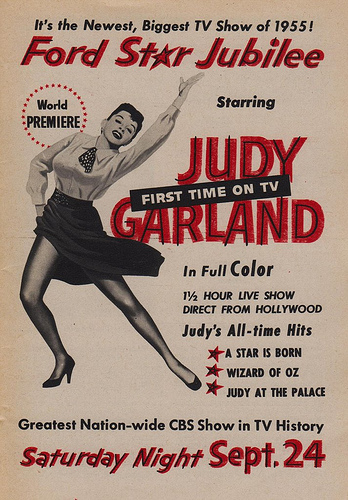
Or do I sound like a fan?!
WW: I know you're a fan!! What is your opinion of the post-1939 films? (Return to Oz, The Wiz, Muppets Wizard of Oz, Tin Man miniseries)?
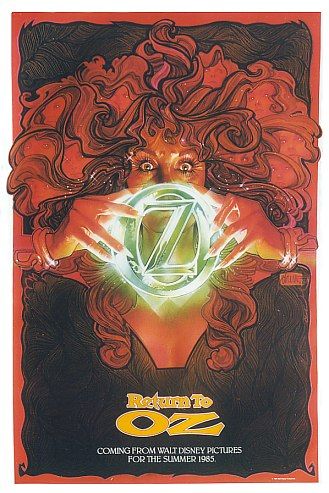 JF: I
love The Muppets, although the modernization to which they fell victim
didn't do much for me. I couldn't watch Tin Man; I hate these
"adult" let's-piss-all-over-the-real-and-happy-and-pure-Oz "authors"
and conceptualizers...and that includes the Wicked books,
too. Return to Oz
was fatally flawed by ignoring what made the Oz stories special and
palatable and unforgettable in the first place: joy and laughter and
entertainment. (It has some fleetingly glorious moments, though, and
some excellent performances and "creaturizations.") And while I
thought The Wiz was wonderful fun in the
Broadway theater
back in the mid-1970s, the film was a disaster. It was a toss-up as to
who was more embarrassing to watch or "take": Jackson or Ross.
JF: I
love The Muppets, although the modernization to which they fell victim
didn't do much for me. I couldn't watch Tin Man; I hate these
"adult" let's-piss-all-over-the-real-and-happy-and-pure-Oz "authors"
and conceptualizers...and that includes the Wicked books,
too. Return to Oz
was fatally flawed by ignoring what made the Oz stories special and
palatable and unforgettable in the first place: joy and laughter and
entertainment. (It has some fleetingly glorious moments, though, and
some excellent performances and "creaturizations.") And while I
thought The Wiz was wonderful fun in the
Broadway theater
back in the mid-1970s, the film was a disaster. It was a toss-up as to
who was more embarrassing to watch or "take": Jackson or Ross.
JS: The
post-1939 Oz films have the predicament of being compared to their
ultimate predecessor. Thus, in all of the adaptations that
followed,
filmmakers had a task of creating a presentation with its own identity.
I find that struggle to be so apparent, particularly in Return
to Oz, that
the films become unenjoyable. It's also reasonable to claim that
general audience flock to reincarnations of Oz because of their
familiarity and regard for the 1939 film. It is my position that
the
alignment of talent that occurred in 1938 to generate such a supreme
product has never been matched.
WW: John, you've been a member of the International Wizard of Oz Club for quite some time now. How do you feel about the books vs. film debate within the club?
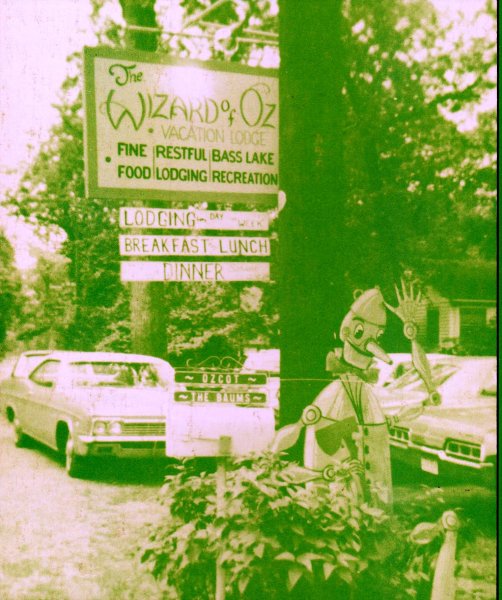 JF: To
me, there's
never been a debate, perhaps because "back in the day"
when I joined and began attending the annual Ozmapolitan Conventions in
Indiana (annually from age 12), I was basically the only movie-oriented
member. BUT, if one foot was planted firmly in M-G-M, my other foot was
rooted in Baum, Denslow, Neill, Reilly & Lee, To Please A Child,
and on and on and on. I loved it ALL. I corresponded with Ruth Plumly
Thompson and Eloise McGraw (Merry-Go-Round in Oz
was just about to be published that autumn) and many of the
Club
honchos and movers-and-shakers. One and all were older than I...and
every single one of them was kind, encouraging, generous, supportive,
enthusiastic, fun, and wonderful company.
JF: To
me, there's
never been a debate, perhaps because "back in the day"
when I joined and began attending the annual Ozmapolitan Conventions in
Indiana (annually from age 12), I was basically the only movie-oriented
member. BUT, if one foot was planted firmly in M-G-M, my other foot was
rooted in Baum, Denslow, Neill, Reilly & Lee, To Please A Child,
and on and on and on. I loved it ALL. I corresponded with Ruth Plumly
Thompson and Eloise McGraw (Merry-Go-Round in Oz
was just about to be published that autumn) and many of the
Club
honchos and movers-and-shakers. One and all were older than I...and
every single one of them was kind, encouraging, generous, supportive,
enthusiastic, fun, and wonderful company.
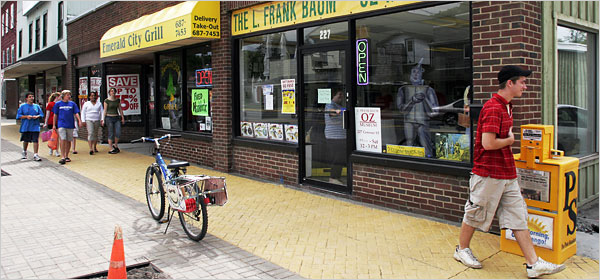 WW: Jonathan, have you attended Oz events over
the years? If so, what are some of the highlights for you?
WW: Jonathan, have you attended Oz events over
the years? If so, what are some of the highlights for you?JF: I have attended the festivals in Indiana, Wamego and Chittenango. Each one has its own charm but the most memorable thus far has been Chittenango. It was wonderful that the town is so proud of their Baum heritage and so eager to welcome us Ozians. The festival was also my first public presentation on Oz making it even more special.
WW: Why do you think Oz still resonates with people after 100 years? (By the way, next year is the 100th anniversary of the first filmed version by L. Frank Baum's Oz Film Manufacturing Co.)
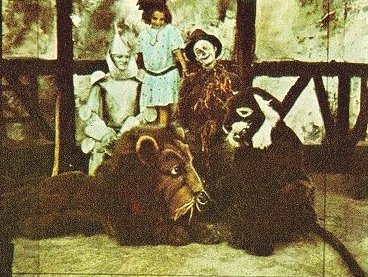 version as being that
footage done for the (Baum's) 1908 Radio Plays.... For
me, Oz resonates due to
its originality, astounding and appealing characters, and ceaseless
ability to take one on "the
journey" -- from page one of virtually any
of the books. Veteran Club member Dr. C. Warren Hollister wrote about
and referenced the "three-dimensionality" of the Oz series, and I never
fail to cite this when I discuss Baum (et al). From Chapter One, Page
One, we all march right into the text and travel the route and
adventures as they happen. And the sheer entertainment value of
the
stories (and the incomparable entertainment power of the
authors and
illustrators -- and M-G-M filmmakers) is well-nigh immeasurable.
version as being that
footage done for the (Baum's) 1908 Radio Plays.... For
me, Oz resonates due to
its originality, astounding and appealing characters, and ceaseless
ability to take one on "the
journey" -- from page one of virtually any
of the books. Veteran Club member Dr. C. Warren Hollister wrote about
and referenced the "three-dimensionality" of the Oz series, and I never
fail to cite this when I discuss Baum (et al). From Chapter One, Page
One, we all march right into the text and travel the route and
adventures as they happen. And the sheer entertainment value of
the
stories (and the incomparable entertainment power of the
authors and
illustrators -- and M-G-M filmmakers) is well-nigh immeasurable.
JS: L. Frank Baum should be credited for his talent as a captivating storyteller and for his deep understanding of the human condition. The rudimentary message contained within "The Wonderful Wizard of Oz" is the discovery of inner strength and the triumph of good over evil. Further, Dorothy's longing to return home beckons to the human plight for companionship. Baum's genius is apparent in his ability to convey such profound messages in a manner that entertained and delighted. It is he who provided for the longevity of Oz.
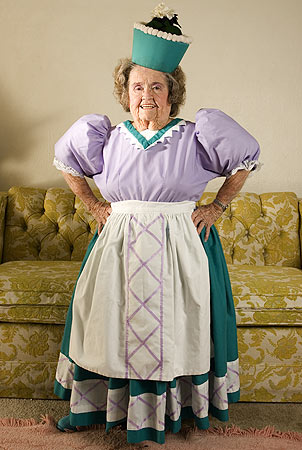 WW:Any
plans for a 75th anniversary project?
WW:Any
plans for a 75th anniversary project?
JF: LOL -- This topic came up when I sat with the powers-that-be at Warner Home Video in March to discuss potential extras for the September's DVD set release. I told them they only had two options for the next anniversary in five years: they'd either have to develop technology that puts any viewer right INTO the film action...or send Munchkin Margaret Pellegrini and me door-to-door to visit with anyone who bought it AGAIN.
WW: Lastly, why should people buy yet another MGM Oz tie-in book?
JF: Hopefully, they'll
buy it for (and find in it) the sheer entertainment
value it attempts to provide. We've tried to tell the story of Oz from
1900 to 2009 -- with, of course, major Metro emphasis -- and with a
clear-cut thesis of celebrating Baum, Garland, and M-G-M for THEIR
capacity to so thoroughly, timelessly entertain.
JS: This book aims at
satisfying a broad audience. We've taken the time to
"catch up" the fan who may not have had access to the previous
histories. We've also taken care to interest the fanatic by
assembling
a great number of newly discovered images or using familiar images in a
fresh way. It is also written in a much
more accessible and
entertaining manner than some of its predecessors. As John
helped me
discover from the beginning, "It's Oz. If it's not fun, you're
doing it
wrong!" ∆
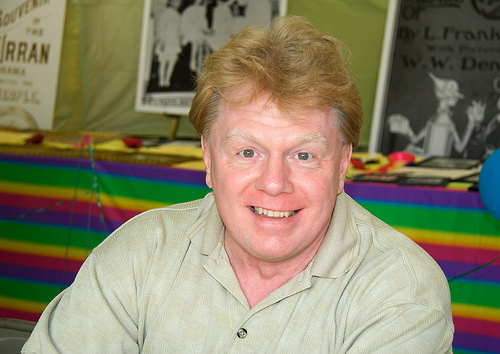 John
Fricke lives in NYC and has been instrumental in
promoting Oz to the greater public for many
years. He is not only
a writer, but also a producer, director and performer. He has won
an Emmy for his work on the American Masters television series, and was
nominated for a
Grammy for his liner notes to the Judy Garland: 25th Anniversary
Retrospective CD. John can be reached at johnfricke@aol.com
John
Fricke lives in NYC and has been instrumental in
promoting Oz to the greater public for many
years. He is not only
a writer, but also a producer, director and performer. He has won
an Emmy for his work on the American Masters television series, and was
nominated for a
Grammy for his liner notes to the Judy Garland: 25th Anniversary
Retrospective CD. John can be reached at johnfricke@aol.com

Jonathan Shirshekan lives in St. Louis, Missouri and is one of the
foremost Oz collectors, researchers and
preservationists. He will
be at the International Wizard of Oz Club's 2009 National Convention in
Manhattan, Kansas with John Fricke. He can be reached at
jshirshekan@mac.com
"The Wizard of Oz: An Illustrated Companion
to
the Timeless Movie Classic" is due to be published this Fall. A
preview is available here: Preview
Blair Frodelius lives in upstate New York and is the
editor of The International Wizard of Oz Club's Electronic newsletter,
The Ozmapolitan Express; The Daily
Ozmapolitan; and OzProject.egtech.net. He can be reached at
blair@frodelius.com
Home Again

